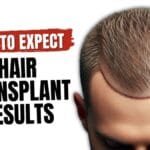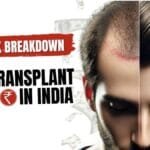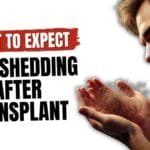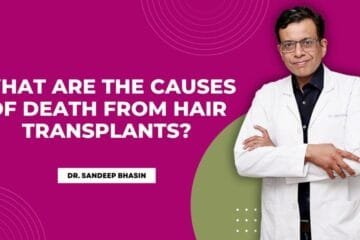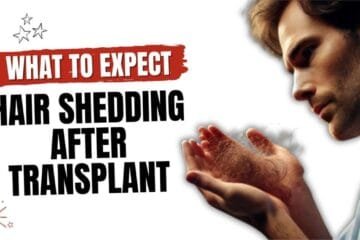Hair transplants have revolutionized the way people address hair loss. Factors like aging, genetics, or medical conditions can lead to thinning hair. A crucial aspect of this procedure is the hair transplant donor area, which plays a key role in achieving natural, lasting results. Thanks to advancements in hair restoration, regaining a fuller head of hair is now more accessible than ever.
The donor area plays a crucial role in hair transplantation. Surgeons take hair from this region of the scalp or body and transplant it to areas with thinning or baldness. Your donor area’s health and quality directly affect your transplant’s success, so understanding its importance is essential.
What Is the Hair Transplant Donor Area?
The donor area refers to the part of your body where hair follicles are extracted for transplantation. In most cases, this area is located on the back and sides of the scalp, where hair tends to be thicker and more resistant to hair loss. The quality of the donor area plays a crucial role in achieving a natural-looking hair transplant. If you are wondering where to get the best hair transplant in Delhi, check out our detailed guide. Remember, donor area quality is crucial for successful Hair Transplant Planning in Delhi.
Common Areas Used as Donor Sites
The back and sides of the head serve as the most common donor areas, but surgeons may also use body hair from the chest, beard, or legs if scalp hair is insufficient. However, body hair has certain limitations, which we will discuss later.
Types of Hair Transplants

Hair transplants generally fall into two major categories:
Follicular Unit Transplantation (FUT)
In an FUT hair transplant, surgeons surgically remove a strip of skin with hair follicles from the donor area. They then dissect the strip into individual follicular units and transplant them into the recipient area.
Follicular Unit Extraction (FUE)
In FUE hair transplant, hair follicles are extracted individually from the donor area using a punch tool. The smaller incisions in this method often lead to faster healing and minimal scarring.
Importance of Donor Hair Quality
- Hair Density: The number of healthy hair follicles in your donor area significantly affects the success of your hair transplant. Individuals with denser hair have more options for successful transplantation.
- Texture and Growth Patterns: The texture and growth patterns of donor hair must match the hair in the recipient area for a natural-looking result. Fine hair may not provide enough coverage, whereas coarse hair could appear unnatural in some areas.
Assessing Your Donor Area
Pre-Transplant Assessment
Before a hair transplant, doctors thoroughly assess your donor area to evaluate hair density, follicle quality, and skin health. This assessment helps determine the feasibility of the procedure.
Factors That Influence Donor Area Viability
Age, genetics, and health conditions can all affect the quality of your donor area. Conditions such as alopecia can reduce the number of available hair follicles.
How Much Hair Can Surgeons Extract from the Donor Area?
- Safe Extraction Limits: It’s important not to overharvest from the donor area, as doing so can lead to permanent thinning or visible scarring. A skilled surgeon will calculate how many follicles can safely be extracted without compromising the donor area’s appearance.
- Impact of Overharvesting: Overharvesting can result in a patchy, unnatural appearance in the donor area. This is why it’s crucial to choose an experienced surgeon to ensure a balanced and aesthetically pleasing outcome.
Donor Area Recovery After Surgery
Healing Timeline
The healing process varies depending on the type of hair transplant. For FUT procedures, the recovery period is longer, as it involves sutures. For FUE, healing is usually faster, and patients may return to their normal routine sooner.
Post-Operative Care for Donor Areas
Taking care of the donor area after surgery is vital for proper healing. Patients should follow their surgeon’s hair transplant aftercare instructions, which typically include keeping the area clean, avoiding sun exposure, and taking prescribed medications to reduce swelling.
Can Donor Hair Grow Back?
One common question people ask after a hair transplant is whether the donor’s hair will grow back. The simple answer is no. Once surgeons extract hair follicles from the donor area, regrowth depends on the harvesting method. In the Follicular Unit Extraction (FUE) method, surgeons remove individual hair follicles. They usually take them from the back or sides of the scalp. These follicles don’t grow back in their original spots, but the surrounding hair can sometimes cover up the small gaps, making them less noticeable.
On the other hand, with Follicular Unit Transplantation (FUT), a strip of scalp is removed, and the area is stitched up. The hair around the scar may grow back, but the follicles taken from the strip won’t.
In either case, the donor area typically remains healthy, and there is still enough hair left to maintain a normal appearance. However, it’s essential to have a skilled surgeon to minimize the visible impact on the donor site.
Permanent Hair Loss in Donor Sites
For FUT procedures, the donor area will experience permanent hair loss in the excised strip. However, surrounding hair usually covers this area, reducing the appearance of thinning.
Can Other Body Parts Serve as Donor Areas?
Body Hair Transplant (BHT) Techniques
For patients with limited scalp hair, surgeons may consider Body Hair Transplant (BHT) techniques. They harvest hair from the beard, chest, or other body parts and transplant it to the scalp.
Pros and Cons of Using Body Hair
While body hair can provide additional grafts, it may differ in texture, growth pattern, and length from scalp hair, which could affect the final result.
Common Donor Area Problems and Solutions
Scarring in Donor Area
Scarring is a common concern, especially with FUT procedures. While hair may hide scars, patients with short hairstyles may choose FUE, which leaves smaller, less visible scars.
Poor Donor Hair Quality
If the donor’s hair is weak or sparse, it can compromise the results of the transplant. In such cases, doctors might suggest alternative treatments like PRP therapy to improve hair strength before the procedure.
Conclusion
Your donor area plays a crucial role in the success of a hair transplant. A good candidate for the procedure is someone who has a healthy, dense donor area that provides enough grafts to cover the areas of hair loss. Always consult with a qualified surgeon to assess your donor area and ensure you achieve the best possible results.
A successful hair transplant not only restores your hair but also boosts your confidence. With the right aftercare, the donor area will heal smoothly, leaving you with minimal scarring and a fuller head of hair.
FAQs
Yes, but the amount of donor hair available will decrease after each procedure, so multiple surgeries may require a larger donor area.
If your donor area is thin, alternatives like body hair transplants or hair cloning (in development) might be options.
It depends on the technique. FUE leaves minimal scarring, while FUT may leave a linear scar, usually hidden by hair.
If your donor area is depleted, body hair transplants or experimental treatments like hair cloning might be considered.
The procedure is done under local anesthesia, so you won’t feel pain during the extraction. However, mild discomfort may occur during recovery.
The hair transplant donor area refers to the region on your scalp, usually the back or sides, where healthy hair follicles are transplanted. These areas are less prone to hair loss, making them ideal for extracting grafts implanted in balding or thinning areas.
No, the hair in the donor area does not grow back after a hair transplant. This is because the hair follicles are permanently removed from the scalp in that area to be transplanted elsewhere. However, the surrounding hair remains unaffected, making the thinning less noticeable over time.
Preserving the donor area is crucial because it ensures a sufficient supply of healthy hair for future transplants. If surgeons over-harvest or damage the donor area, it may not provide enough hair for future procedures. This can affect the overall appearance of the scalp. Proper care helps maintain long-term hair restoration results.
After a hair transplant, your donor area may appear red or slightly swollen for a few days. The extracted follicles may cause tiny scabs to form. However, these usually heal within a week or two. The area will gradually return to its normal appearance, and any signs of surgery will become less noticeable over time.
Postoperative care for the donor area after a hair transplant includes keeping the area clean and dry, avoiding direct sunlight, and not scratching or rubbing it. Follow your surgeon’s advice on applying any prescribed ointments. Avoid strenuous activities and take medications as directed to reduce pain and swelling. Healing typically takes 10-14 days.







